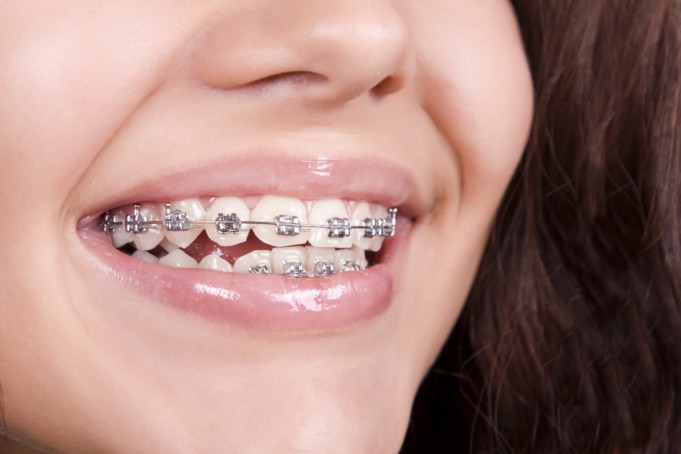They are devices used in orthodontics that align and straighten teeth and help to position them about a person’s bite, while also working to improve dental health.
Dental braces are devices that are placed directly on teeth to move them. For most of us, braces are the most common method for achieving optimally aligned teeth and a sense of beauty.
Aside from straightening teeth, braces are used to improve the relationship of how our teeth come together between the upper and lower jaws. The braces are the actual devices that are attached to teeth.
They usually consist of “brackets” that bond to the teeth and a metal wire which inserts into the brackets. The metal wires are tightened and work together with the brackets to move teeth into the desired positions.
What Are the Different Types of Braces
Invisalign
It is a traditional removable brace that uses clear aligners to straighten teeth. Without a trace of metal, it gently moves teeth using a series of transparent plastic aligners. It is custom-made for the user and will move the teeth little by little. It is very discreet due to lack of metal wires or brackets.
Self-ligating braces
They are braces that almost resemble traditional fixed braces, but they have clear or ceramic brackets, making them more discreet. They use clips to hold the pair wire in place thereby creating lesser friction and make it easier to brush teeth around your brace.
Lingual braces
They are braces that are attached to the lingual side of your teeth. The brackets are custom made to fit the more uneven back surfaces of your teeth.
Ceramic braces
They are braces with tooth-coloured or clear brackets that blend into teeth. They are intended to give an appearance of less metal in the mouth.
Metal braces/traditional braces
They hold a thin wire in place with rubber bands to put pressure on teeth and move them to the desired place.
If your teeth are not naturally straight, you can consider using braces. For one to have braces or to know whether you need braces to rectify the shape or arrangement of your teeth you need to look for the following:
Crowded or crooked teeth
Warning signs include teeth that look as though they are sitting sideways, teeth that overlap each and those that protrude significantly farther than the surrounding teeth. Determine whether your teeth are crowding by use of dental floss. If the floss is tough to slide between your teeth, your teeth may be crowded or too close together.
Unequal spacing
The teeth may be unequally spaced and this causes problems during bite which need correction by braces. The surface result might be an overbite and occurs when the upper teeth extend past the lower teeth, underbite when the lower teeth extend past the upper teeth or an overjet when you bite down, and your lower front teeth do not touch the upper front teeth leaving a small sagittal space.
If your food gets stuck in your teeth
This may be due to gaps between the teeth. Braces help to eliminate gaps that trap bacteria and food particles.
The smell of your breath
Persistent bad smell even after thorough brushing and flossing of your teeth may be a sign of bacterial trapping. I would recommend such a person to use dental braces as gaps might be present or crowded teeth.
How you speak
If you notice a lisp as you talk it may be as a result of malocclusion or misaligned teeth. Braces will help eliminate the lisp by properly aligning your teeth and the jaw.
Knowing the best doctor for your braces is an important thing. A dentist will diagnose, treat and manage your overall oral health care. On the other hand, an orthodontist specializes in the alignment of your teeth and jaws.
They will diagnose, prevent and treat malocclusions, severe bites or overcrowded teeth. Your orthodontist will determine which treatment will straighten your teeth and retain your mouth muscles best.
Braces require some management practices, and it’s nice to have a doctor who will advise you on when to change or the regular check-ups, how to manage pain and all that accompanies wearing of braces.












